
by Christina Waters | Mar 28, 2017 | Home |
I could read almost as soon as I could walk, and never looked back. Books were early friends, companions, conjurers, and sages—leading me straight into the heart of myths and fairytales, my favorite early literary genres.
Books showed the way to my own powers of conjuring, of imagining, of dreaming big. Books gave me permission to daydream in realms that were completely different from my own baby boomer reality. In the pages of biographies, folktales, literary romances, histories I found an endless crowd of exotic places and exciting new acquaintances.
Books expanded the world, and in turn the tales and characters I met in books illuminated my everyday life, enriching everything I said, and saw, and did. Playing Robin Hood in my childhood transformed the woods behind our house into a vast and mysterious forest, where ghosts, and dashing knights, and evil robbers awaited me and my friends.
Colors, textures, and aromas were heightened, and became more vivid thanks to my growing fluency with adventures and fables.
The life of my imagination—opened and enlarged by books—helped to shape my lifelong habits of exploration, of inquiry, of asking questions in every situation. My sensory life took on an edge, an urgency that has never left me. Books led the way, kindling my own sense that daily life could be more intriguing, more playful, more everything than more people seemed content to accept. I was mad for books, and they just seemed to pump more and more energy into the world I saw and in which I lived.
From the start (thanks to a deep saturation by literature) I rejected the ordinary whenever possible, taking the paths that led to as yet undiscovered destinations. Books triggered my every enterprise and choice. Books colored my every experiment and romance.
They still do.
Right now I’m reading three books of fiction and one of scientific non-fiction. Each one opens —and keeps open—a new country of word images, of ways of speaking, and of revelations of consciousness on the part of people and places that only exist between the covers of those books. What a lot of excitement magically contained in a small package!
Which is why spending a few hours in a bookstore—such as Pilgrim’s Way Bookstore in Carmel — sifting through some new and old books, talking about writing books, and my own new book Inside the Flame, strikes me as just about the most Christina Waters activity I could engage in on a Saturday afternoon in April.

Join me on April 8th, from 1 to 3pm, and bring your own favorite book stories with you — Pilgrim’s Way in Carmel. Looking forward to seeing you!

by Christina Waters | Mar 27, 2017 | Home |
Experience is always more precious than stuff. Never forget that. So give yourself the gift of a new experience—or revive an old favorite experience—every day.
You will never look back with satisfaction at owning that Mustang convertible or those Manolo Blahnik spiked heels the way you will remembering the Scottish highlands glimpsed from the train, or the taste of pistachio gelato enjoyed at the Piazza Navona. The sound of the waves will bring you infinitely greater pleasure than a vintage leather jacket or a new Cuisinart espresso machine.
You know what I mean. Here are six ways to dig deeper into your everyday life.
•  Read a new book. How exciting it is to dive into unknown fictional territory through a provocative bit of literature. Or mystery novel. Or the work of a new author.

• Take a new way to work. For example instead of the freeway leave a few minutes early and take some old back road that leads through a new neighborhood. Let your eyes have fun soaking up new buildings, trees, views.
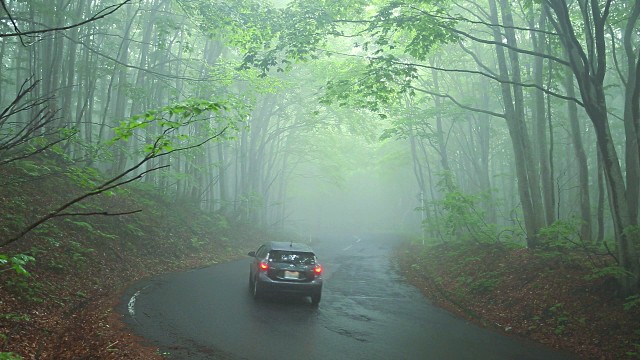
•  Get in touch with your favorite collections. I use dusting as an excuse to handle and admire items I’ve brought home and placed where I can see them often. Dusting is a way of telling your special memorabilia that they are precious, and in turn reminding yourself of the day, the occasion, the event that opened up that portal in your life. Where did this unique object come from? Who were you with? Why did you love it? All of this is a mutual dance of cherishing. You love it, and it reminds you of why you did. Simpatico!
•  Cook a favorite dish and share it with friends. I always bake cookies at Christmas time and deliver them to my neighbors. It’s a great excuse to rekindle acquaintances, to say hello to the couple with the new baby, or the elderly woman who always power walks past my house every morning. No one refuses the gift of cookies, and later there’s plenty of fuel for follow-up conversations about which ones were the favorites.

[Or eat something you’ve never tasted before—maybe at a restaurant, or maybe in your own kitchen. Dare to sample a new flavor!]
•  Take your favorite walk—at least once a week. In all weather, and in all seasons. Let your senses savor the changing cycles of the year, the power of nature in all of its many guises and disguises. The changing cycles of the land, sky, and temperature.

•  Keep a field guide to wild birds by your dining room window or patio door. Look up the names and habitats of frequent wildlife visitors.
In the award-winning documentary Rivers and Tides, environmental artist and land sculptor Andy Goldsworthy describes how he approaches each new outdoor artwork. As he begins picking up rocks, feeling their weight, starting to experiment with placing them together to see what will work and what won’t, he says he always begins by “shaking hands with the land.” I love that phrase!
Shake hands with the land in which your life is lived. Reach out to it and see how much larger your world grows. You will too!

by Christina Waters | Mar 3, 2017 | Home |
Sometime during the Renaissance, Florentine artist, critic, and man about town Giorgio Vasari says to his best friend Michelangelo (yes, that Michelangelo), “Hey Titian’s in town—let’s go visit his studio.” M. is down with that and the two guys check out Titian’s studio. “And as artists always do,” Vasari continues, “we praised Titian’s new paintings to the skies.” But as soon as they left the studio Michelangelo turns to Vasari and says, “too bad Titian can’t draw!”
This charming anecdote proves that the practice of praising someone’s work to their face, and then excoriating it behind their backs, is nothing new.
Here’s an all-too-common variation: someone tells me that they are going to see an exhibition by Q. “I just love Q so I know I’ll love his exhibit.” I am being told that because someone is a friend of Q, that therefore they will approve of Q’s artwork.
A disconnect of logic is going on here! Just because you are friends with Q, doesn’t mean that therefore you will find Q’s artwork wonderful. You might very well find it worthy of your applause, your support, your respect (given how much effort, planning, etc. went into the creation of it) but there is no necessary connection between liking Q and liking Q’s artwork. None. Furthermore (and here I begin to zero in on my real pet peeve) praising Q is not equivalent to supporting Q.
 “I like to support the arts,” so many community-minded folks tell me. “I go to the openings, I buy stuff at Open Studios. I tell my friends how good the work is and encourage them to go, see, and purchase.” It’s one thing to be a good friend and make sure that your buddy’s theater piece doesn’t play to a house of empty seats. You want to support their hard work, so you go and applaud loudly afterwards. That’s being a good friend.
“I like to support the arts,” so many community-minded folks tell me. “I go to the openings, I buy stuff at Open Studios. I tell my friends how good the work is and encourage them to go, see, and purchase.” It’s one thing to be a good friend and make sure that your buddy’s theater piece doesn’t play to a house of empty seats. You want to support their hard work, so you go and applaud loudly afterwards. That’s being a good friend.
But what if you go, and realize that for whatever reason (lack of rehearsal time, lack of experience, lack of training, etc.) the performance you’ve seen is not wonderful. Perhaps it has some charming moments, or not. But in your heart of hearts you know that this is not the way Bob Dylan (or Maria Callas, or U2, or Laurence Olivier) got started.
Question: are you still being a good friend if you refuse to be candid? if you pledge your unconditional approval of their earnest, but cliché-filled attempt? Is it really helpful to heap praise upon something you know to be not entirely worthy of it? (The bigger question is: is it even ethically appropriate to praise something that is mediocre? We’ll leave that question for now.)
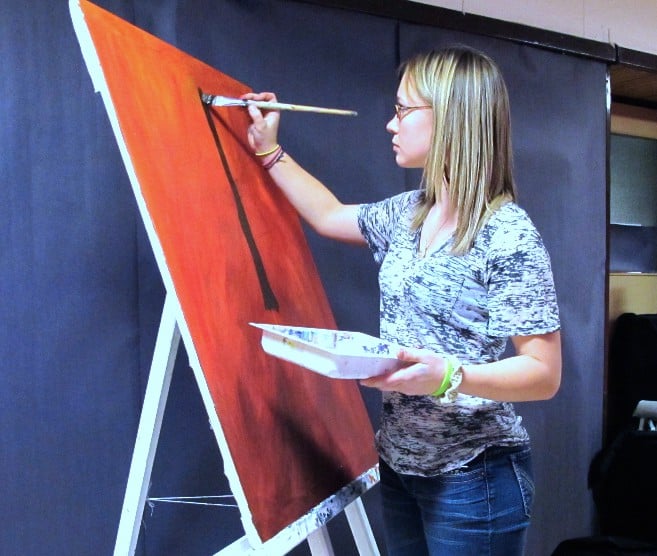 A big part of the need to participate in feel-good situations involving creative output and willing consumers is to provide mutual support in a cultural context. I come to your event, you come to mine. We both win. Well, we do if by “winning” is meant we both feel immediate gratification and ego reinforcement. The obvious and ubiquitous example of this is the iron fist of social media, emblemized by Facebook, in which “conversations” begin, undergo rapid-fire reinforcements and thumbs-up,
A big part of the need to participate in feel-good situations involving creative output and willing consumers is to provide mutual support in a cultural context. I come to your event, you come to mine. We both win. Well, we do if by “winning” is meant we both feel immediate gratification and ego reinforcement. The obvious and ubiquitous example of this is the iron fist of social media, emblemized by Facebook, in which “conversations” begin, undergo rapid-fire reinforcements and thumbs-up,  and then come to a close with an onslaught of emoticons, the Happy Face closure of a digital happy dance.
and then come to a close with an onslaught of emoticons, the Happy Face closure of a digital happy dance.
In his review of A.O. Scott’s Better Living through Criticism, Daniel Mendelsohn notes Scott’s insight that “art, like criticism, is more reactive—more ‘critical’—than many who idolize ‘creativity’ would acknowledge: Manet is conducting a passionate argument with Titian and Velázquez,†“Les Demoiselles d’Avignon†is a dialogue with African masks and statuary. Both art and criticism originate in “the urge to master and add something to realityâ€; both are characterized by a “transformation of awe into understanding.â€
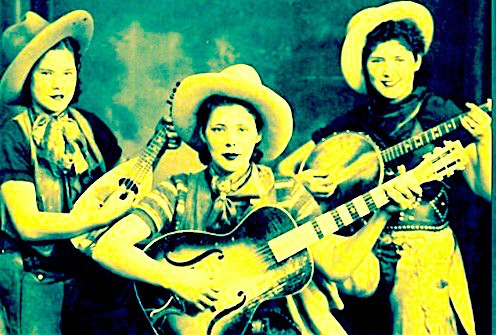 In other words, many seasoned art watchers contend that what art is not, is simply feel-good self-expression. That’s “making things.” Making yourself happy by making something that pleases you. No one would ever take away our right to make ourselves happy. But should we call everything we make, “art”?
In other words, many seasoned art watchers contend that what art is not, is simply feel-good self-expression. That’s “making things.” Making yourself happy by making something that pleases you. No one would ever take away our right to make ourselves happy. But should we call everything we make, “art”?
If we suppress our critical instincts and applaud every effort, no matter how self-indulgent, sketchy, or embarrassing, aren’t we essentially lying to the feckless creator? If I give an “A” to every one of my students, am I not only failing to be honest but also undermining the excellence of those whose work is clearly on a whole other level?
If everyone wins a gold medal at the Olympics, then there’s no point whatsoever to competition. And that’s what’s missing in today’s culture. We have lost our will — or perhaps our nerve—to compete, and hence to push ourselves and our skills, vision, abilities further. Somehow along the way, we seem to have become desperately afraid to fail. Yet in failure is born the desire to try again, to do better, to ultimately succeed.
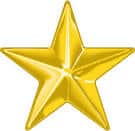 So everybody gets a gold star, feels happy, and never considers trying harder. No one’s abilities ever move beyond the “feel good” point. And the world just stands still, posing for its own narcissistic selfie.
So everybody gets a gold star, feels happy, and never considers trying harder. No one’s abilities ever move beyond the “feel good” point. And the world just stands still, posing for its own narcissistic selfie.
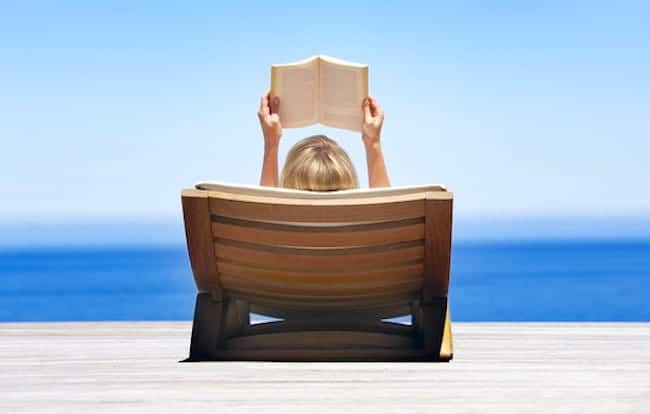
traveling companion
by Christina Waters | Feb 27, 2017 | Home |
A girlfriend who lives on the East Coast emailed, completely excited about her upcoming cruise vacation. “I’m taking your book with me,” she revealed. “It will be the perfect companion for this trip.” Of course I was pleased and honored that she thought of my book, Inside the Flame, to take on her journey. But come to think of it, yes, that is a great idea.
One of the strengths of this little book, is also one of its marketing challenges. The chapters range widely through many adventures, many intricately-described sensory events of being human in a world accessed through sight, sound, taste, touch, mood. Because the book doesn’t follow a single thread, but offers details and anecdotes about many kinds of experience, it’s hard to categorize. But the fact that it offers a wide menu of flavors means that it can be picked up, read a bit, and then put down for awhile. Perfect for travel.
Inside the Flame just might be the perfect book to take on a cruise. You can dip into it, here and there, savor it slowly taking time to re-read and meditate over the many sensory details that fill each chapter. On a cruise, where time runs at a very different pace from everyday life, you are free to let ideas flow into your consciousness, and roam where they like. There’s no pressure from time restrictions, of deadlines, schedules, the usual daily tasks and everyday habits. You’re free to enjoy the suggestions and invitations the book contains.
 And while you could also download a Kindle version of the book, having the “real thing” in your hands is one of those additional tactile pleasures, like the umbrella in the drink. The heft of the book in your hands, the feel of the paper, the eye candy of the playful illustrations (by Alice Koswara) and ocean-hued aquamarine headline typeface. I hope my friend keeps a journal as she reads, noting how the activities and discoveries that glide through the pages are familiar from her own life experience. Or not.
And while you could also download a Kindle version of the book, having the “real thing” in your hands is one of those additional tactile pleasures, like the umbrella in the drink. The heft of the book in your hands, the feel of the paper, the eye candy of the playful illustrations (by Alice Koswara) and ocean-hued aquamarine headline typeface. I hope my friend keeps a journal as she reads, noting how the activities and discoveries that glide through the pages are familiar from her own life experience. Or not.
If you’re on a cruise, like my friend has planned, you’re already engaged in a new adventure, an odyssey to refresh the full spirit of awareness, of sensory exploration that I consider living “inside the flame.”
On holiday, we give ourselves permission to spend more time plunging deeper into the rich, sensory pleasures that fill each morning, afternoon, evening. Paying attention always seems heightened, sharper to me when I exit my home turf and sail out into new places, newly relaxed activities, and of course that best pleasure of all—having lots of unstructured time to myself.
That’s the best frame of mind in which to consider the various chapters of Inside the Flame. They can be read in any order—although there is an underlying movement toward a sense of closure at the end. On her vacation cruise my friend will hopefully discover her own favorite chapters, the ones that make her smile with recognition. And the ones that excite new possibilities in the life to which she returns, refreshed.
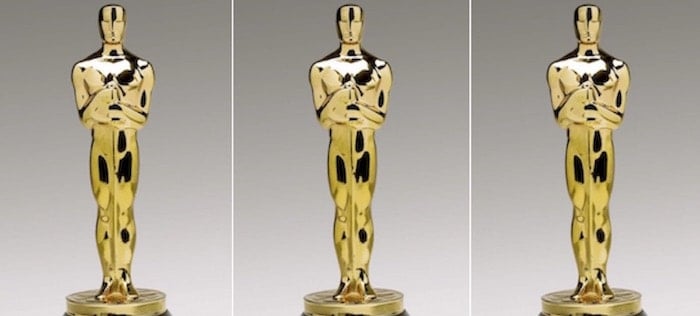
Oscar Predix!
by Christina Waters | Feb 11, 2017 | Home |
Who’ve we got now? Hmm….
Best Actor. Two words. Casey Affleck.

I love Viggo, and I don’t love Denzel (no I haven’t seen Fences but I’ve endured the film’s trailer at least four times. Way too forced, too much of a strident over-the-top theater piece.). Gosling? Surely you jest. And I didn’t like Garfield in Silence. So that leaves…..yes! Casey Affleck a true existential hero who brings fresh authenticity and beauty to the idea of angst.
Best Actress: Should go to the stunning Isabelle Huppert, but the film Elle is such a difficult, often horrifying, always perplexing film to watch that I doubt the Academy will go for it. Nope to Emma Stone. Nope to Meryl Streep in a silly role. Ruth Negga? perhaps. But most likely Natalie Portman for embodying an American icon, Jackie. But if the Academy unloads its all-American needs on La La Land (in all the other categories), it will go to the brilliant Huppert.
Best Supporting Actor.

I would so love it if the remarkable Dev Patel took it for Lion. He just won the BAFTA, so it’s very very possible. But it might go, for many political and alternative reasons, to Mehershala Ali in Moonlight.
Best Supporting Actress.
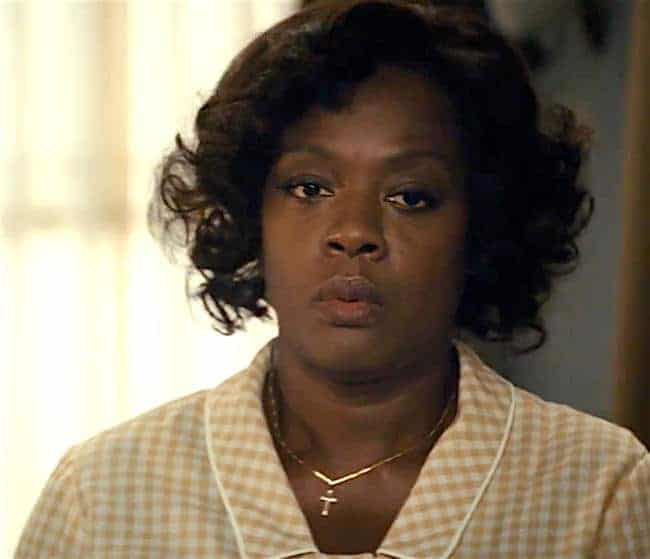
Viola Davis. But so help me Nicole Kidman has never been better than she was as the generous Australian mother in Lion. Even her Oscar-winning portrayal of Virginia Woolf in The Hours wasn’t this moving.
Best Director. Should be Kenneth Lonergan for his work in creating an indelible tragic master piece in Manchester by the Sea. He’s been overlooked for fine work in the past. This is a richly-deserved bit of film orchestration. But given the severe case of hype-ola and self-congratulations going on around La La Land, it will probably be Damien Chazelle.
Best Cinematography. Silence. This film is even more gorgeous and pungent than Scorsese’s Last Temptation of Christ. But I wouldn’t mind if Lion got it. Just not please please not La La Land.
Best Original Score. Lion would be great. Yes another big yes for this wonderful film. Dustin O’Halloran and Hauschka create undulatant musical aching in their sound track strong on augmented harp and prepared piano. Magical and rhapsodic. (But yes, I do know that La La Land is the odds-on favorite in this category too.)
Best Sound Editing: Arrival, thanks to the eerie intertwining of animal sounds, including birds and camels, slowed down, manipulated, and interspliced with samples of Maori native music and plastic. The results are sonic poetry, altogether other-worldly, yet somehow recognizable. I know I said this film would NOT win an Oscar, but in this case I kinda hope I’m wrong.
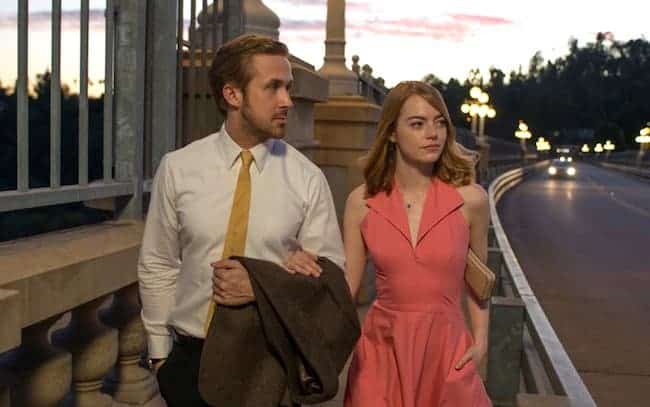
Best Production Design: Why fight it? That enormous tide of promotional spin that insists upon beating us over the head with how terrific it looks, how much clever stuff went into orchestrating each scene, etc. etc. it will just have to be…..La La Land.
Best Picture: In my dreams it would be Lion, even more perfectly realized in every way—sight, sound, writing, acting, scope—than even Man-by-the-Sea. But in the harsh glare of daylight, it will be La La Land.

Arrival
by Christina Waters | Feb 9, 2017 | Home |
This film will not get an Oscar. None. Especially not lead actor Amy Adams, who (wisely) was not nominated. Sound harsh? Be honest. When have you turned to your film-going companion and said, “hey, let’s go see that new Amy Adams flick.”? Never. The reason is that, despite the promotional ads taken out by her studio, producers, publicist, and/or mother, you don’t think about Amy Adams at all.
There’s a reason for this: she’s forgettable. Let me put that another way: she’s not memorable. To be a memorable actor you need either extravagant amounts of talent, or an intriguing, expressive face. Our greatest film stars have both, e.g. Meryl Streep, Jennifer Lawrence, Benedict Cumberbatch. Alas, Adams lacks physical excitement as well as acting energy. Certainly this is true in Arrival, the new film by Denis Villeneuve in which we are asked to believe that Adams is über linguist Dr. Louise Banks, contacted by the Army to help decode communications from a mysterious group of aliens that have come to earth.
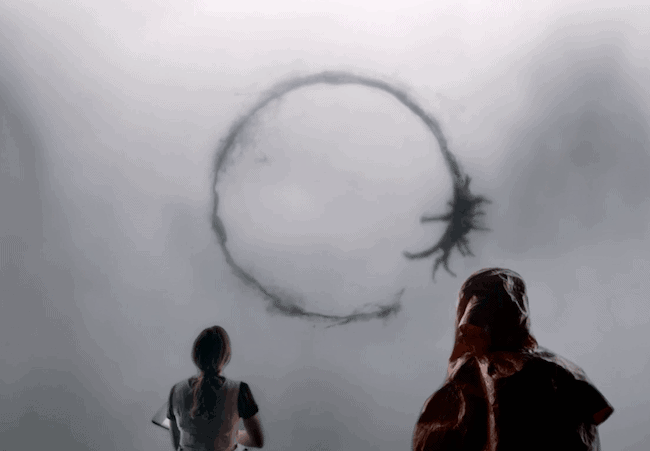 Dr. Banks brings her own emotional sufferings with her to the windswept plains of Montana where an enormous ovoid alien craft hovers, and opens its portal to receive inquiring scientists every 18 hours. The medium of moving pictures allows lavish ease of time-tinkering such that a film can show us flashbacks, flash-forwards, interspersed with imagined or perhaps remembered sounds, words, kisses, tears, and “events.” And Villeneuve uses such non-linear filmic devices in an attempt to inject intrigue into the character of Louise Banks, as well as to help cover-up what is otherwise a highly worn path of science fiction clichés.
Dr. Banks brings her own emotional sufferings with her to the windswept plains of Montana where an enormous ovoid alien craft hovers, and opens its portal to receive inquiring scientists every 18 hours. The medium of moving pictures allows lavish ease of time-tinkering such that a film can show us flashbacks, flash-forwards, interspersed with imagined or perhaps remembered sounds, words, kisses, tears, and “events.” And Villeneuve uses such non-linear filmic devices in an attempt to inject intrigue into the character of Louise Banks, as well as to help cover-up what is otherwise a highly worn path of science fiction clichés.
Borrowing freely from such film classics as Close Encounters, Apocalypse Now, The Day the Earth Stood Still, and E.T., this film was attractively bathed with music by Jóhann Jóhannsson and sound design by Montreal-based sound editor Sylvain Bellemare, whose team created uncanny sonic “language” for the amorphous aliens utilizing mixed and manipulated sounds of animals, metal, Maori flute, and water. Among others. But back to the main problem: casting.
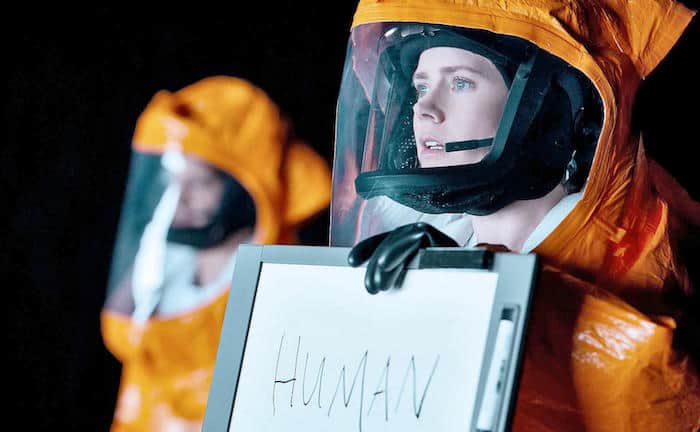 Some films soar into the stuff of indelible memories thanks to powerful performers and their mesmerizing screen presence. See my reviews of Lion, and Manchester by the Sea, for recent examples. By the exact same token, a film—even a film that has everything else going for it—can thud! because of weak performers in key roles. And in this case that’s Amy Adams, whose rounded features seem incapable of emotional import or expression, and the barely better Jeremy Renner as the bland linguist’s fellow researcher. In Retter’s case, his perfunctory performance was further sabotaged by a weak-kneed script and cliché-driven direction. [See Amy Adams’ face in the photo above? That’s the most “acting” she does in the entire film. This is her Meryl Streep moment.]
Some films soar into the stuff of indelible memories thanks to powerful performers and their mesmerizing screen presence. See my reviews of Lion, and Manchester by the Sea, for recent examples. By the exact same token, a film—even a film that has everything else going for it—can thud! because of weak performers in key roles. And in this case that’s Amy Adams, whose rounded features seem incapable of emotional import or expression, and the barely better Jeremy Renner as the bland linguist’s fellow researcher. In Retter’s case, his perfunctory performance was further sabotaged by a weak-kneed script and cliché-driven direction. [See Amy Adams’ face in the photo above? That’s the most “acting” she does in the entire film. This is her Meryl Streep moment.]
Lest you rise up indignantly and accuse me of body-shaming in the case of Adams, let me remind you that I, like so many others, paid good money to be swept away by the magic of cinema. I had high hopes for Arrival, a narrative about contact and communication with enigmatic extra-terrestrials. Producers spent a lot of money preparing a canvas upon which a handful of actors would deliver the story and create characters who were spellbound by what they found.
To create all of this you need performers capable of enormous intensity, especially when they are on-screen almost all the time, and their faces—rather than car crashes, explosions, and scenic vistas—are doing all of the work.
Adams Adams’ face can’t do the heavy-lifting required.
Simply the wrong choice upon which to hang a film. Helen Mirren, yes. Adams, no. So it’s not a mystery at all why her name does not turn up on the Best Actress list of nominees this year. No mystery at all.









 “I like to support the arts,” so many community-minded folks tell me. “I go to the openings, I buy stuff at Open Studios. I tell my friends how good the work is and encourage them to go, see, and purchase.” It’s one thing to be a good friend and make sure that your buddy’s theater piece doesn’t play to a house of empty seats. You want to support their hard work, so you go and applaud loudly afterwards. That’s being a good friend.
“I like to support the arts,” so many community-minded folks tell me. “I go to the openings, I buy stuff at Open Studios. I tell my friends how good the work is and encourage them to go, see, and purchase.” It’s one thing to be a good friend and make sure that your buddy’s theater piece doesn’t play to a house of empty seats. You want to support their hard work, so you go and applaud loudly afterwards. That’s being a good friend. A big part of the need to participate in feel-good situations involving creative output and willing consumers is to provide mutual support in a cultural context. I come to your event, you come to mine. We both win. Well, we do if by “winning” is meant we both feel immediate gratification and ego reinforcement. The obvious and ubiquitous example of this is the iron fist of social media, emblemized by Facebook, in which “conversations” begin, undergo rapid-fire reinforcements and thumbs-up,
A big part of the need to participate in feel-good situations involving creative output and willing consumers is to provide mutual support in a cultural context. I come to your event, you come to mine. We both win. Well, we do if by “winning” is meant we both feel immediate gratification and ego reinforcement. The obvious and ubiquitous example of this is the iron fist of social media, emblemized by Facebook, in which “conversations” begin, undergo rapid-fire reinforcements and thumbs-up,  In other words, many seasoned art watchers contend that what art is not, is simply feel-good self-expression. That’s “making things.” Making yourself happy by making something that pleases you. No one would ever take away our right to make ourselves happy. But should we call everything we make, “art”?
In other words, many seasoned art watchers contend that what art is not, is simply feel-good self-expression. That’s “making things.” Making yourself happy by making something that pleases you. No one would ever take away our right to make ourselves happy. But should we call everything we make, “art”? So everybody gets a gold star, feels happy, and never considers trying harder. No one’s abilities ever move beyond the “feel good” point. And the world just stands still, posing for its own narcissistic selfie.
So everybody gets a gold star, feels happy, and never considers trying harder. No one’s abilities ever move beyond the “feel good” point. And the world just stands still, posing for its own narcissistic selfie.
 And while you could also download a Kindle version of the book, having the “real thing” in your hands is one of those additional tactile pleasures, like the umbrella in the drink. The heft of the book in your hands, the feel of the paper, the eye candy of the playful illustrations (by
And while you could also download a Kindle version of the book, having the “real thing” in your hands is one of those additional tactile pleasures, like the umbrella in the drink. The heft of the book in your hands, the feel of the paper, the eye candy of the playful illustrations (by 





 Dr. Banks brings her own emotional sufferings with her to the windswept plains of Montana where an enormous ovoid alien craft hovers, and opens its portal to receive inquiring scientists every 18 hours. The medium of moving pictures allows lavish ease of time-tinkering such that a film can show us flashbacks, flash-forwards, interspersed with imagined or perhaps remembered sounds, words, kisses, tears, and “events.” And Villeneuve uses such non-linear filmic devices in an attempt to inject intrigue into the character of Louise Banks, as well as to help cover-up what is otherwise a highly worn path of science fiction clichés.
Dr. Banks brings her own emotional sufferings with her to the windswept plains of Montana where an enormous ovoid alien craft hovers, and opens its portal to receive inquiring scientists every 18 hours. The medium of moving pictures allows lavish ease of time-tinkering such that a film can show us flashbacks, flash-forwards, interspersed with imagined or perhaps remembered sounds, words, kisses, tears, and “events.” And Villeneuve uses such non-linear filmic devices in an attempt to inject intrigue into the character of Louise Banks, as well as to help cover-up what is otherwise a highly worn path of science fiction clichés. Some films soar into the stuff of indelible memories thanks to powerful performers and their mesmerizing screen presence. See my reviews of
Some films soar into the stuff of indelible memories thanks to powerful performers and their mesmerizing screen presence. See my reviews of 